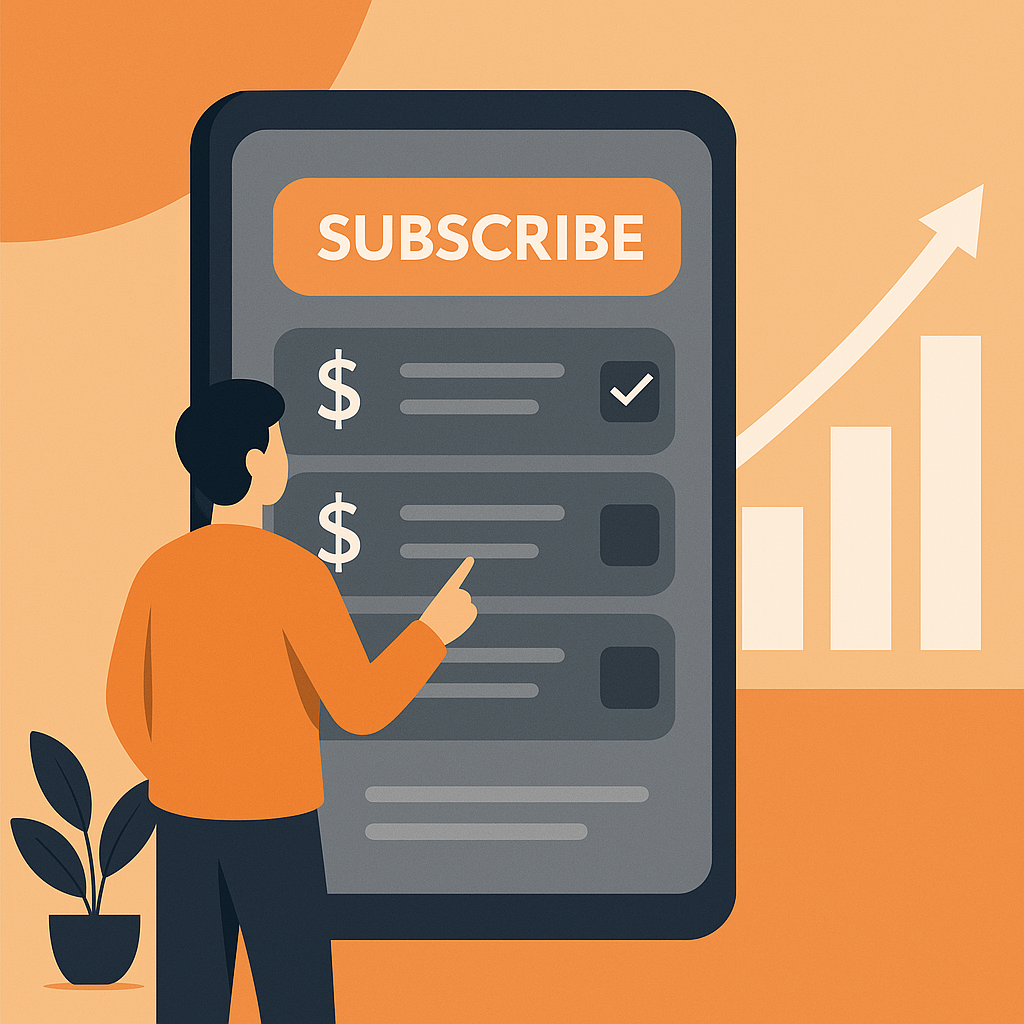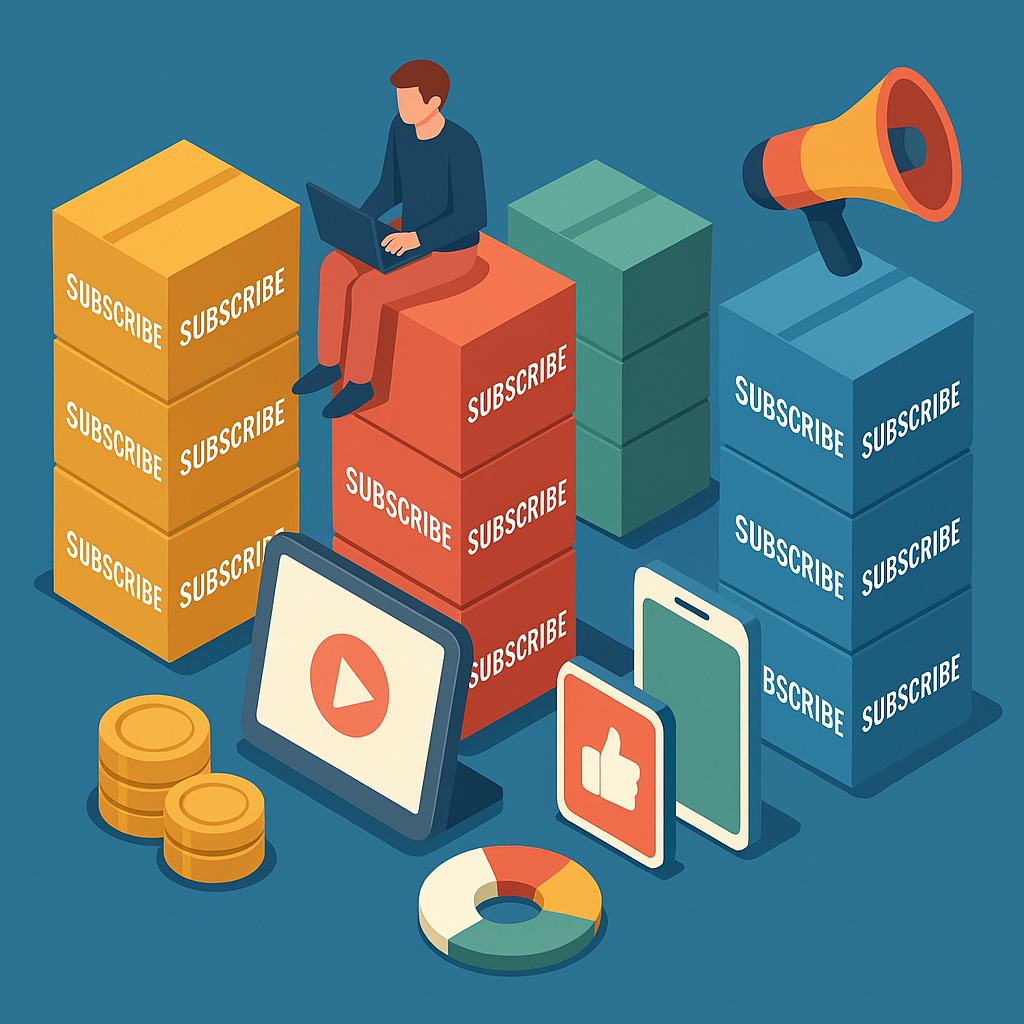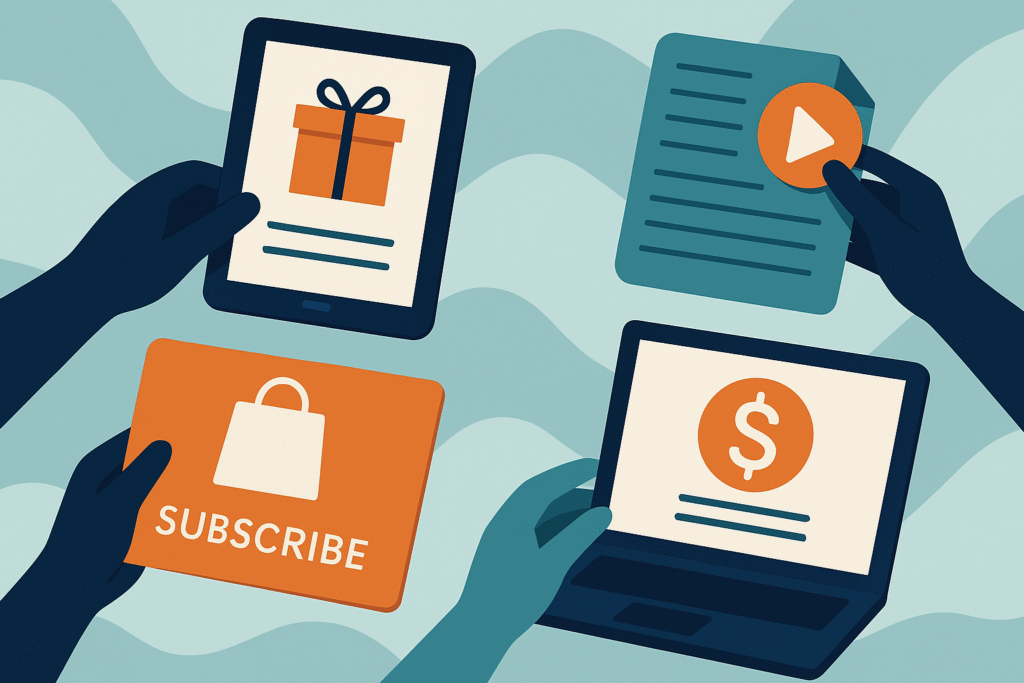I. Introduction: “Peak Subscription” Comes to an End
The subscription economy was the toast of the business world for much of the past decade, a seemingly unstoppable growth machine powered by a simple, intoxicating and, in retrospect, unsustainable formula: growth at all costs.
Fueled by the lowest interest rates of a generation and a sea of venture capital, companies ranging from B2B SaaS giants to direct-to-consumer startups operated under one unified imperative: acquire new subscribers at any cost.

This “land grab” mentality spawned the golden era for consumers, a time of 30, 60 or even 90-day free trials and forever introductory offers and a steady march toward top-line user growth as a chief measure of success, frequently at direct odds with sound profitability and unit economics.
That time is officially over in 2025.
Economic sobriety is the new era. Driven by a macro shift toward higher interest rates globally, an increasingly cautious and risk-averse investment community, and a consumer population afflicted with a kind of acute “subscription fatigue,” there is a basic revaluation underway.
No longer just growth, but durable, profitable growth.” Companies all over the subscription map — from streaming media and software to e-commerce and fitness — are in the midst of a momentous strategic shift.
They are pivoting their attention from the expensive, high-churn game of new customer acquisition to the infinitely cheaper and predictably more profitable objectives of keeping and retaining them, getting more from them (smartly optimizing prices, packaging, etc.), and building more resilient, cash-flow-positive business models.
In this report, we will delve into the tactics that define the emergence of the subscription economy’s maturity in 2025, and when and how larger implications for this strategic shift defines the subscription economy in 2025.
II. The Great Unbundling and Strategic Re-bundling
The subscription economy in 2025 has transformed how companies bundle and price their offerings. This change was a key milestone in the subscription economy in 2025, shaping how companies design offers today. You didn’t have to subscribe to services you didn’t really want.
And yet, as the market has been flooded with dozens of stand-alone subscriptions all vying for a piece of the consumer’s wallet, this unbundling has turned into frustration and fragmentation. A complex strategic re-bundling is now underway though, as companies look to find alternative routes to growth, and crucially, to retention.
- The Trend in Action: Tech and media giants are at the forefront of this charge. Amazon Prime is still the classic example, wrapping one core utilitarian benefit — free, fast shipping — with a plethora of other services, such as Prime Video, Amazon Music and cloud storage.
- Apple’s “Apple One” subscription also packs its services — Apple Music, Apple TV+, iCloud and Apple Arcade — into a single discount monthly rate. This trend is accelerating and going down-market now. In 2025, I see European and Asian telcos packaging Netflix and Disney+ with their mobile plans.
- B2B Software wants to sell you blobus as a suite of products which include that 5% of all users who import things beyond their quota.
- The Trend in Action: It’s giants of tech and media that are leading this charge. Old standbys like Amazon Prime remain the classic example of the marriage of one core, utility benefit — free, fast shipping — and a host of other, related services, such as Prime Video, Amazon Music and cloud storage.
- And Apple’s “Apple One” subscription bundles its services — Apple Music, Apple TV+, iCloud and Apple Arcade — into one discounted monthly fee. This trend is accelerating and reaching down market now. I’m predicting for 2025 European and Asian telcos bundling Netflix and Disney+ with their mobile plans.
- B2B Software would like to sell you blobus as a suite, including that 5% of all the users, the ones who are importing things other than their quota.

III. The Tectonic Move in Focus from Acquisition to Retention
The maxim of marketing, an ancient truism chiseled into stone, had always held that it costs approximately five times more to acquire a new customer than to keep an old one. This is why the subscription economy in 2025 revolves around retention rather than just growth.
The emphasis now is less on the top of the funnel (acquisition) and more on the middle and bottom of the funnel (engagement and retention).
- A Note on the Dominance of Customer Lifetime Value: A growing number of profitable subscription companies are now operated with an “obsession” according to the customer lifetime value, or the total net profit a customer is expected to yield a firm during the period the firm expects to have the association with the customer.
- Many companies are investing in advanced data analytics and machine learning to develop more sophisticated models to predict churn risk, recognize high-value customers, and tell the story of which features and behaviors are associated with long-term loyalty. This trend is central to the subscription economy in 2025.
- The Role of Personalization as a Core Retention Tool: In a day and age of infinite choice, a homogenous user experience is a course towards churn. With AI, companies are bypassing simple personalization (such as addressing a customer by their first name in an email) to providing deep, predictive personalization.
- This goes beyond simply suggesting what to watch to also making dynamic, personal “channels” and interfaces. Subscription boxes from ecommerce are leveraging advanced algorithms and user feedback loops to shape their product offering around individual tastes and making the service feel personalized and indispensable
- Community as a Competitive Moat: Creating a strong, bound community around the product is one of the most defensible and powerful retention strategies. It changes what should be a transactional relationship into an emotional one.
- They are building user forums, exclusive virtual and offline events and high-value learning content (webinars, how-twos, etc.) to create a feeling of belonging and shared identity among their users. If you’re part of an community of supportive people online for your workout app it’s much less likely you’ll cancel your subscription to it.
IV. The New Age of Dynamic, Multifaceted, and Value-Based Pricing
The days of a one-size-fits-all subscription cost are over, that’s for sure. When the customers started getting more sophisticated, it could not have been easier for any business to keep selling and competing without a structured strategy for patience-based selling.
- The Shift to Tiered and Usage-Based Models: In the subscription economy in 2025, such flexibility has become an expectation rather than a differentiator. In the world of B2B SaaS, usage-based pricing is becoming the prevailing model.
- In practice, companies like Snowflake and Twilio bill their customers on a consumption basis (according to the data processed by the gigabyte, the API call made, etc.). This value pricing has two main benefits:
- it reduces the cost of acquisition to new clients and it ensures the company’s revenue scales linearly with the value its clients receive. Such models are fundamental to the subscription economy in 2025.
- The Disciplined Method: Deep (ostensibly lasting) introductory pricing and “50% off for life” deals are waning. Although discounts remain a feature of the marketing toolkit, companies are now rapidly developing more strategic and data-based approaches to their use.
- They’re using them for targeted, short-term campaigns (like seasonal promotions) rather than as a permanent, margin-destroying, all-purpose tactic to build business.
- Price Hikes as Signal of Health: For years, many companies with a subscription model were too scared to raise prices and risk angering users.
- In the fully developed subscription economy, regular incremental price increases are now firmly established as an acceptable and inevitable part of the business lifecycle, as long as they are communicated openly and honestly and delivered back to the member in a continuous investment in new features, new content and in the overall quality of the experience.

V. The Embrace of Hybrid Models: Ads as a New Revenue Stream
To fight subscription fatigue and keep growing their user ranks even as the market becomes saturated, many of the world’s biggest subscription services have adopted a hybrid model that was once anathema to the premium subscription ethos.
- The Trend in Action: The best illustrations are in the fight for streaming video. Heavyweight global options like Netflix and Disney+ have also executed strong launches of cheaper, ad-supported subscription tiers.
- This strategic gambit achieves two hugely important things: first, it unlocks a gigantic new, highly lucrative revenue stream from advertising. Second, and perhaps more crucially, it offers a cheaper on-ramp for new, more price-sensitive members who might have been foundering on the premium, ad-free tiers, effectively reopening the funnel to expansion.
- The Bigger Picture: This split-the-difference model acknowledges that the subscription economy in 2025 isn’t monolithic. A range of consumer will pay for it. By offering an array of choice, from ad-supported to premium ad-free, companies can reach a vastly larger section of the market and create a more durable and diversified revenue foundation.
VI. Conclusion: A Tidier and More Grown Up Future
The 2025 subscription economy is slimmer, savvier and more disciplined than the one that came before it. The era of “grow-at-all-costs” has been replaced with strategies that are built to be sustainable — built on customer lifetime value and sound unit economics instead of the addiction of cheap capital.
Today’s businesses are data-obsessed and empathetic to the changing tastes of consumers. They also need to be nimble when it comes to pricing, packaging and product development.
The changes are a mixed bag for consumers. Gone are the days of never-ending discounts, but what is coming into sharper focus is a sustainable model: personalized, high-value services tailored for permanency.

This evolution proves that the subscription economy in 2025 is ready for a profitable, consumer-focused future.
Links:
2025 Industry Trends in Subscription Models
Smart Bundling Strategies for Digital Products
Maximizing Customer Lifetime Value in the Subscription Era
The Subscription Year 2025: High Competition, Personalization, and Value
Zuora’s 2025 Subscription Economy Index: Growth Resilience & Hybrid Monetization